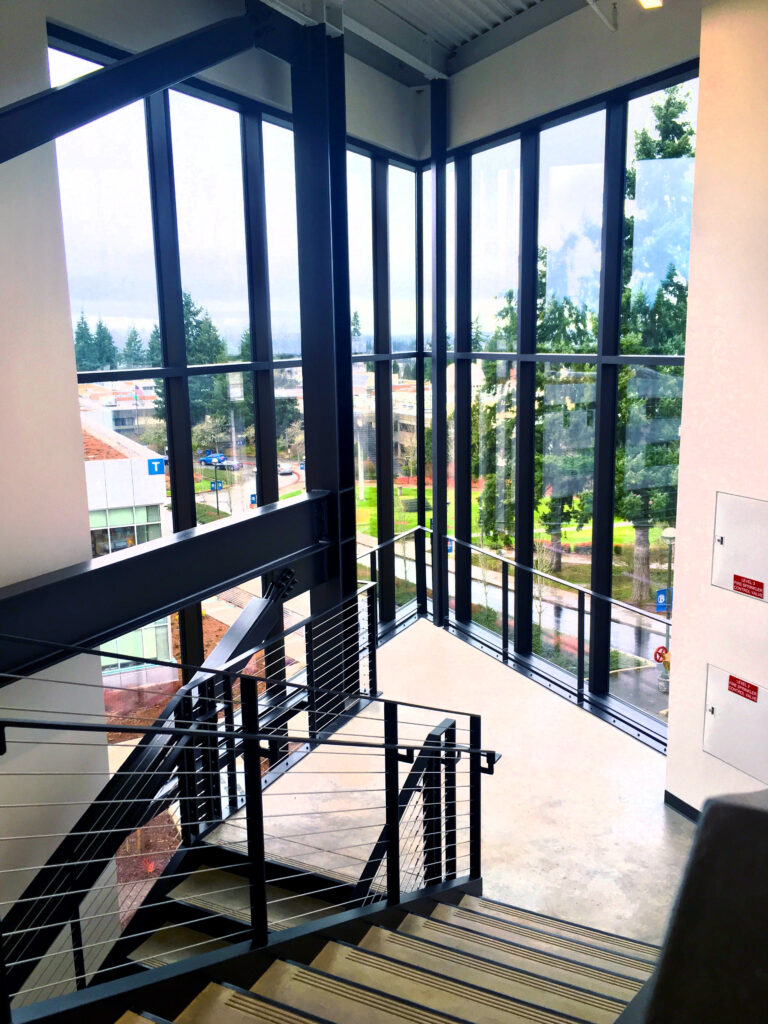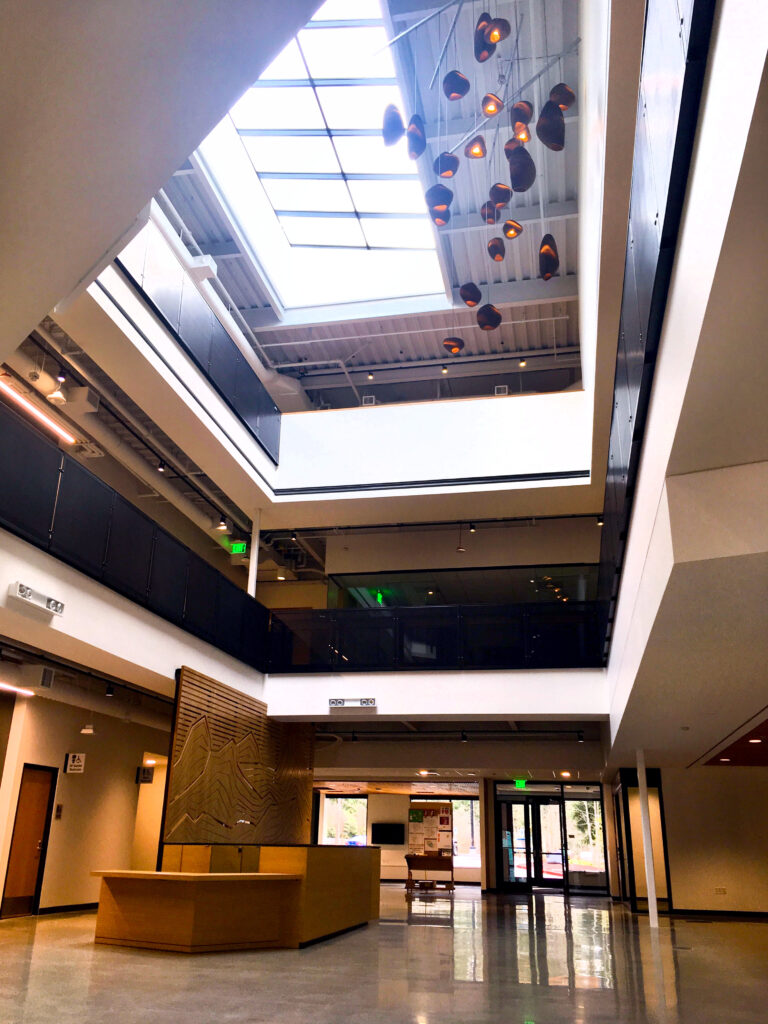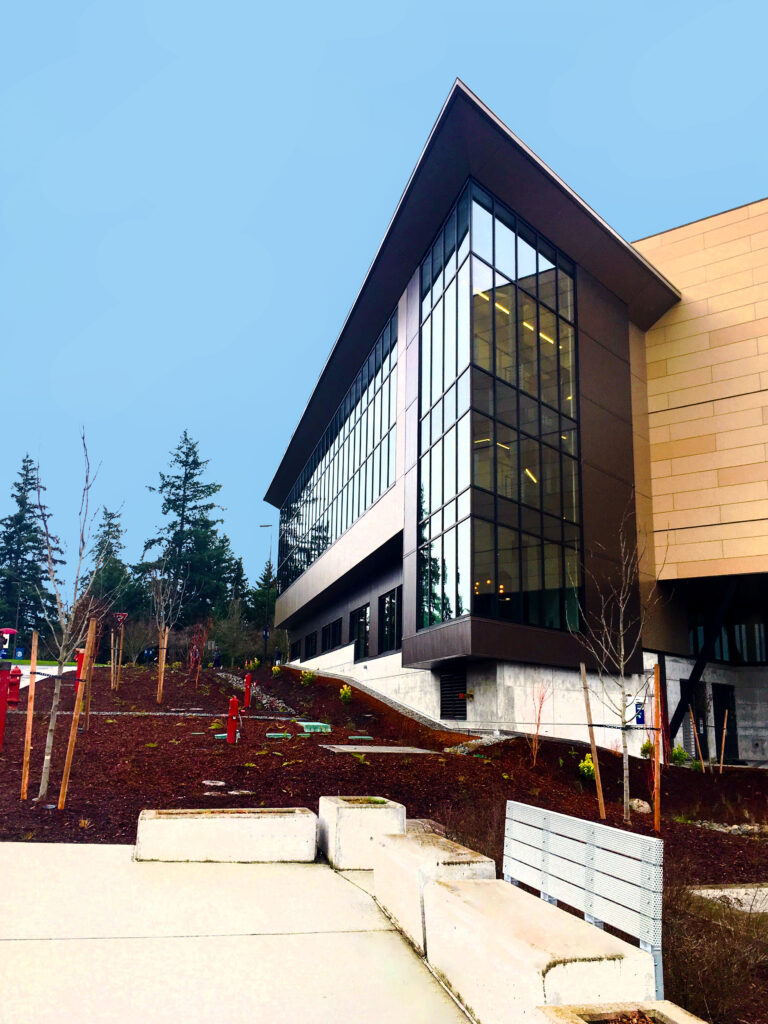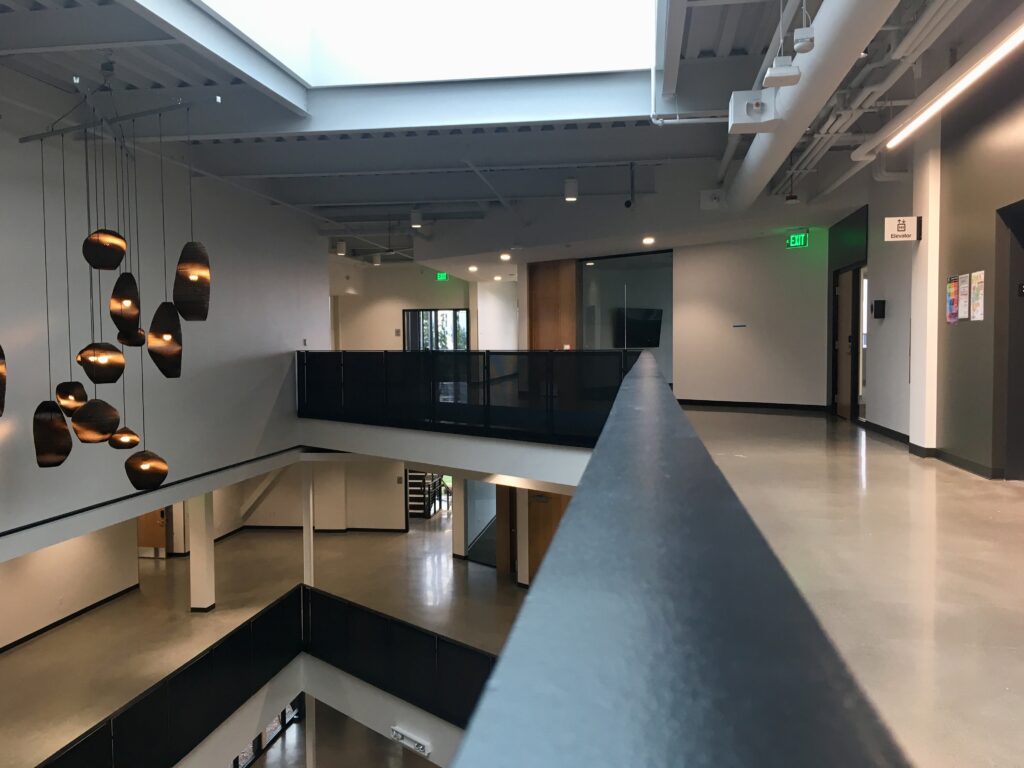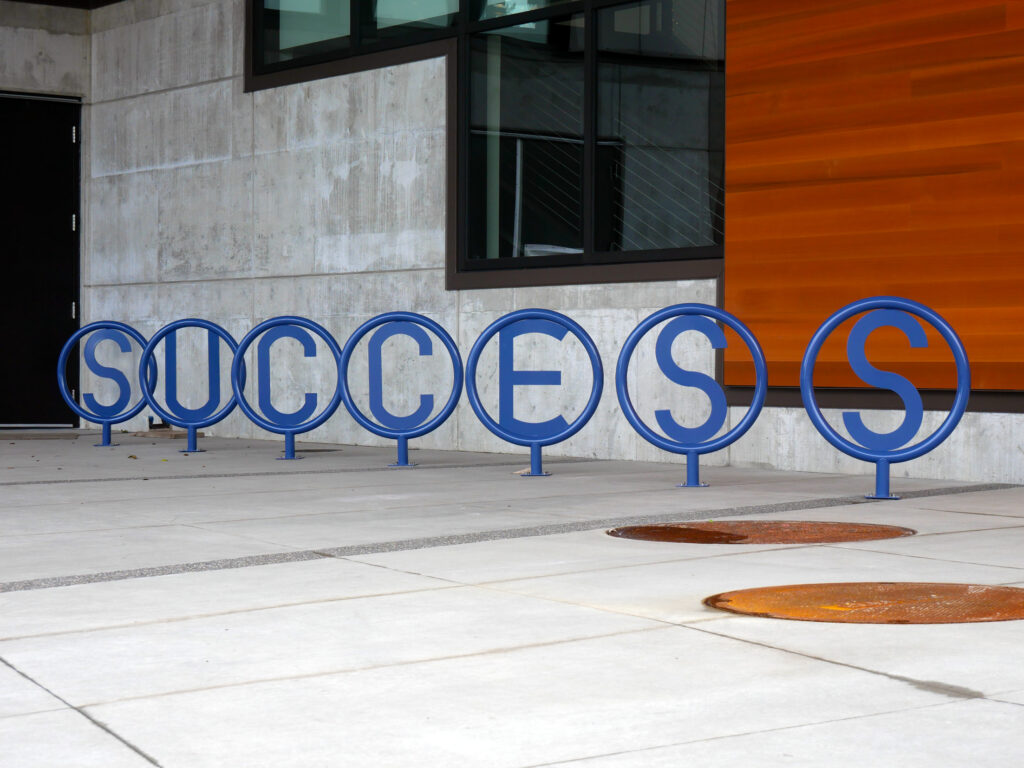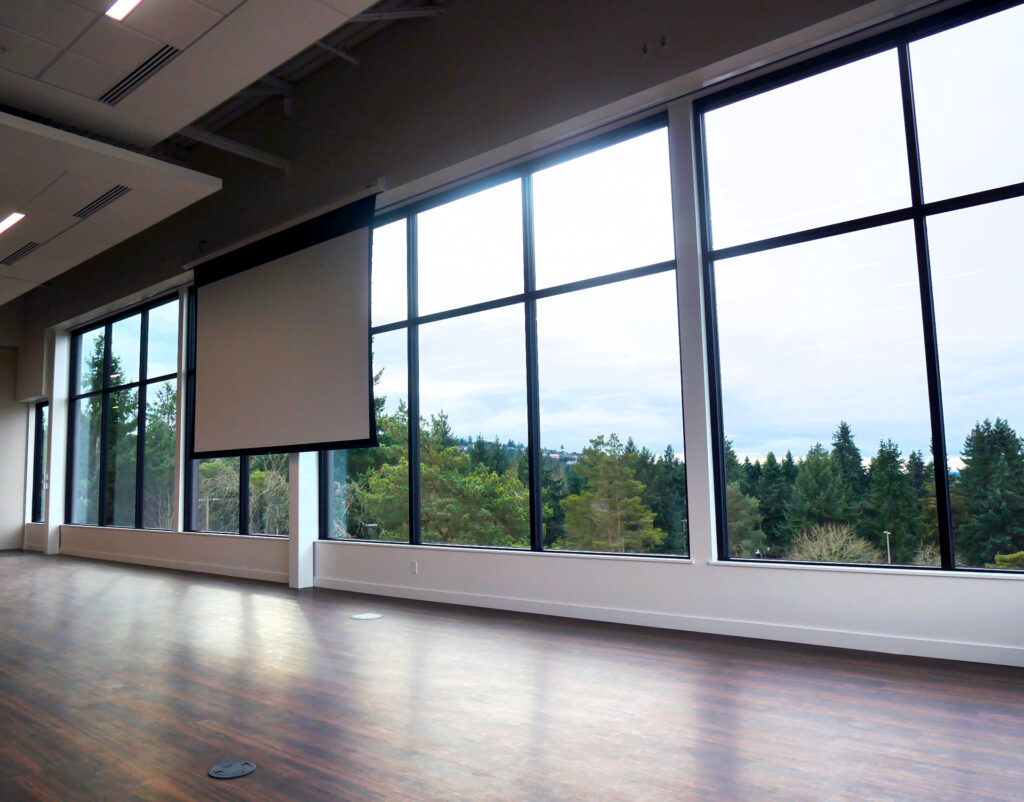The Student Success Center
A Model For Future Leaders: Our 1st V.4 LEED® Silver Building
Bellevue College’s (BC) Student Success Center (SSC) applied for the Green Business Certification Institute as LEED® Silver. BC is committed to teaching excellence and advancing the life-long educational development of students, including the economic, social, and cultural life of our diverse community. Certification means providing
a model for our future leaders to look up to. Bellevue College’s first version 4 LEED® certified project on campus, the Student Success Center, exemplifies our commitment to advancing equity, diversity, inclusion and global awareness; and acting as a catalyst and collaborator for a vibrant region.
Materials and Resources: Choosing Better Products
An Environmental Product Declaration (EPD) is an objective report based on a lifecycle assessment performed on a product. It is used to communicate potential environmental and human health impacts of a product. Manufacturers can then use the data from EPDs to benchmark and identify areas of improvement which means more efficient, environmentally sound, and healthier products in the future.
The Student Success Center features over 30 products with EPDs, many of which are visible such as the window wall system, the exterior metal panels, the building doors, carpet, and wood ceiling panels. Other products like the concrete, drywall, and metal framing also have EPDs.
Energy and Atmosphere: Indoor Energy Use Reduction
Energy efficiency and contributing to BC’s carbon neutrality goals were early priorities when building the SSC. The project team addressed this goal by installing a variable refrigerant flow (VRF) heating and cooling system, which is an efficient way to meet heating and cooling needs in a building by moving air between spaces, rather than separately heating or cooling each space. This VRF system along with energy efficient lighting, building controls, and other strategies means the SSC should require about 20% less energy than a building designed to current industry standards. Additionally, the College engaged a building commissioning professional to ensure the building operates as efficiently as designed. This professional oversaw construction, tested the building operations, trained staff to operate the building, and will confirm the building works well 1 year into operations. Lastly, the College has purchased 4260 MWh of solar and wind power in the form of renewable energy credits to alleviate the building’s projected energy usage.
Low-Emitting Materials: Indoor Environmental Quality
Volatile Organic Compounds (VOCs) are solids or liquids that include a variety of chemicals that when emitted, may have short and long-term health effects. Concentrations are often higher indoors. VOCs can be found in most building materials and furnishings. The SSC used low-emitting products for 100% of the paints & coatings, flooring, ceilings, walls, and insulation. These products are tested by third party organizations to ensure that students, staff, and faculty can enjoy indoor spaces with limited emissions.
Site Development: Protect and Restore Habitat
The Student Success Center landscape design reinforced the native/adaptive northwest plant pallet. Following the example set by the rest of campus, the SSC project protected native trees on site, and restored existing landscape in parking islands and around the edge of construction by removing invasive species and planting new native plants. As a result, over 35% of the site provides food sources and habitat to native birds and insects while cooling the site and absorbing, infiltrating, and evapotranspirating stormwater.
Look for these trees and plants around the site: Appalachian Strawberry, Evergreen Huckleberry, Oregon Grape, Salal, Sword Fern, Vine Maple, Western Red Cedar
Innovation in Design: Social Equity within the Project Team
The Student Success Center was built with social equity in mind. The contractor hired for this project, Howard S. Wright (HSW), is signatory to the Carpenters, Laborers, Operators, and Cement Finishers unions. 20% of the hours it took to finish the building were undertaken by apprentices practicing skills and gaining experience in construction, working through their apprenticeship programs. In addition, all contractors and trades people were paid prevailing wages, which ensured fair pay and benefits for those involved in the completion of this building.
Material Recovery: Salvaging Trees From Construction
The wood used to construct the benches at the Student Success Center (SSC) was salvaged and recovered from trees cut down during the construction of the Student Housing building, located north of the SSC. The BC Grounds Crew cut the lumber into boards, dried them slowly over several years, and milled each board to create seating and tables. In addition, all offcuts and scraps from the milling process were turned into wood chips and used as mulch at the SSC and around campus. This is a great example of reuse and showcases elements of our natural habitat at the SSC.
Electric Vehicles: Transportation
According to the US Department of Transportation, 29% of all US Greenhouse Gas Emissions (GHGs) are from transportation of people and goods. Bellevue College is committed to reducing GHGs from traditional transportation sources by increasing access to electric vehicle (EV) charging stations. EVs produce no tailpipe emissions, and our Washington energy mix contains a majority of renewable energy sources. Three dual charging stations are a part of the SSC, and can be found in parking Lot 2. These ChargePoint stations are available to students, faculty, staff, and guests.
For more information on EV charging at BC, visit:
bellevuecollege.edu/sustainability/sustainbc/transportation
Water Efficiency: Indoor Water Use Reduction
Only 1% of the Earth’s fresh water is easily accessible. Reducing potable water usage by increasing water efficiency ensures that future generations have greater access to a potable water supply. The SSC has reduced water usage by over 35% by installing low flow water fixtures, toilets, and urinals.
Last Updated March 28, 2021

